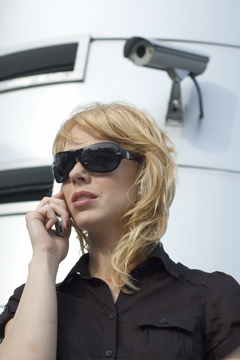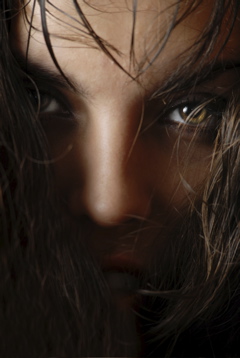A magazine where the digital world meets the real world.
On the web
- Home
- Browse by date
- Browse by topic
- Enter the maze
- Follow our blog
- Follow us on Twitter
- Resources for teachers
- Subscribe
In print
What is cs4fn?
- About us
- Contact us
- Partners
- Privacy and cookies
- Copyright and contributions
- Links to other fun sites
- Complete our questionnaire, give us feedback
Search:
Someone to watch over me

They are everywhere! Cameras on lampposts, street corners, in shops or train stations we sadly live in a world where crime is ever present and video surveillance plays a key part in helping the police to keep us safe. How are computer scientists playing their part in changing the way we police our world today? Perhaps more importantly how far should we go?
Human smart vs Computer Smart
At present most of the surveillance cameras around us send their images to central control rooms where teams of observers keep an eye out for trouble. The problem is that as more and more pictures come in it becomes impossible for humans to keep track of all that's going on. Enter the smart camera. Smart because it has artificial intelligence. Even smarter because understanding what's going on in a moving picture, which is really, really easy for us, is really, really tough for a computer. The human brain is estimated to use about a half of all its computing power to understand the visual world. Take a simple example. Recognising a friend's face on either a dark and rainy day or a sunny day in a shadowy forest is easy for you. You don't really need to think about it. You take vision for granted (but that's because half your brain is working on it). But look at the information that a computer has to work with and these two cases are very different. The intensity values (that is the amount of light in the image) is very different in both situations. The numbers making up the pixels of a digital image are completely different. In the forest the shadows change the light bits of a face to dark. The tip of the nose has say value 10 on the dark day and 100 on a sunny day. Somewhere in these two different sets of data is your friend's familiar face, but how can a computer find it? With current techniques it's still tough, and that's where computer science researchers come in to help find the answers. These difficult computational problems of duplicating human vision with a computer are just starting to be solved. Some fascinating advances have been made but there is still a long way to go.

There are lots of applications waiting once the problems of making computers 'see' are cracked. Of course even if a computer can recognise an expression, detect someone wandering around in a car park in an unusual way or running from a station adding these clues together doesn't mean that we can decide the person's real intention, but we can alert someone to the fact that something different is happening. Computer Science researchers can provide the tools but it is the wider society that needs to decide whether these technologies are appropriate to use, and how they should be used. For better or worse we need to decide.


